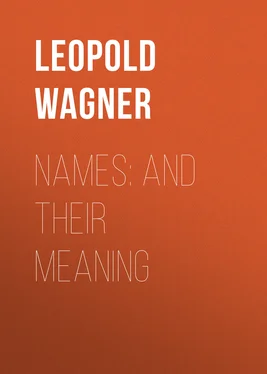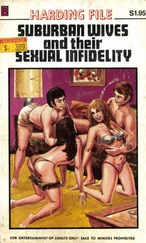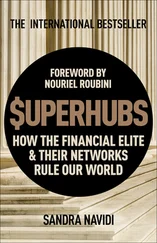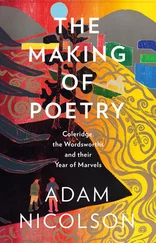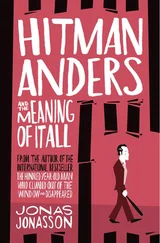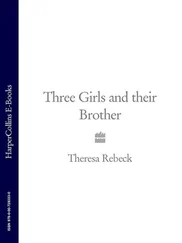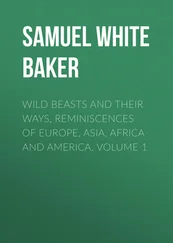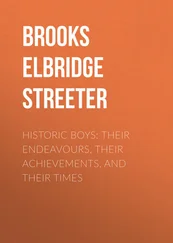Leopold Wagner - Names - and Their Meaning
Здесь есть возможность читать онлайн «Leopold Wagner - Names - and Their Meaning» — ознакомительный отрывок электронной книги совершенно бесплатно, а после прочтения отрывка купить полную версию. В некоторых случаях можно слушать аудио, скачать через торрент в формате fb2 и присутствует краткое содержание. Жанр: Эзотерика, foreign_religion, foreign_antique, на английском языке. Описание произведения, (предисловие) а так же отзывы посетителей доступны на портале библиотеки ЛибКат.
- Название:Names: and Their Meaning
- Автор:
- Жанр:
- Год:неизвестен
- ISBN:нет данных
- Рейтинг книги:3 / 5. Голосов: 1
-
Избранное:Добавить в избранное
- Отзывы:
-
Ваша оценка:
- 60
- 1
- 2
- 3
- 4
- 5
Names: and Their Meaning: краткое содержание, описание и аннотация
Предлагаем к чтению аннотацию, описание, краткое содержание или предисловие (зависит от того, что написал сам автор книги «Names: and Their Meaning»). Если вы не нашли необходимую информацию о книге — напишите в комментариях, мы постараемся отыскать её.
Names: and Their Meaning — читать онлайн ознакомительный отрывок
Ниже представлен текст книги, разбитый по страницам. Система сохранения места последней прочитанной страницы, позволяет с удобством читать онлайн бесплатно книгу «Names: and Their Meaning», без необходимости каждый раз заново искать на чём Вы остановились. Поставьте закладку, и сможете в любой момент перейти на страницу, на которой закончили чтение.
Интервал:
Закладка:
Where the innkeeper was not bound by any ties of gratitude or regard to the ground landlord he evinced his loyalty to the reigning monarch by adopting a portion of the royal arms. As examples of this class:— The White Swanwas the badge of Edward III. and of Henry IV.; The White Swan and Antelope, of Henry V.; The White Hart, and The Sun, both of Richard II.; The White Lion, of Edward IV. as Earl of March, and The Three Suns, of Edward IV. as King of England; The Eagle, of Queen Mary; The Blue Boar, of Richard III.; The Red Dragon, that of Henry VII., chosen for his standard after the Battle of Bosworth Field, and The Greyhound, his original badge as King. The Roseis the symbol of England, just as The Thistlestands for Scotland, The Shamrockfor Ireland, and The Leekfor Wales. A very general expression of loyalty, again, was conveyed in the sign of The Crown, which, by the way, was shrewdly complimentary to the reigning house without offering offence to the partisans of a rival claimant to the throne. The Rose and Crownhad reference originally to the union of the red and white roses in the House of Tudor by the marriage of Henry VII. with Elizabeth, the daughter of Edward IV., in the year 1486; The Crown and Sceptremust have originated in the mind of one who had been witness to the elaborate ceremonial peculiar to a coronation; while The Crown and Anchorsignified the reliance which was placed in the exalted person that wore the crown.
If, on the other hand, our mediæval innkeeper chose to flatter the ground landlord without actually adopting his cognizance, he invariably named his establishment after his lordship’s family title, e.g. , The Earl of March, in compliment to the Duke of Richmond, or else set up some such sign as The Hare and Hounds, The Tally Ho!, The Fox in the Hole, &c., in allusion to the sporting tastes of his patron. At times he even went so far as to enter into the religious enthusiasm of the latter by exhibiting a preference for The Angelor The Salutation, both referring to the Annunciation of the Virgin; The Three Kings, meaning the Magi who presented themselves to the Infant at Bethlehem; or The Cross Keys, the symbol of St. Peter, and the badge of the Archbishop of York. The sign of The Mitrewas generally adopted by an innkeeper whose establishment stood in the vicinity of a cathedral; consequently, this particular sign abounds in cities, but is rarely to be met with in the rural districts.
During the period of the Holy Wars, if the innkeeper did not content himself with the sign of The Turk’s Heador The Saracen’s Head, that of The Golden Cross, which was the ensign carried by the Crusaders, was usually chosen. The modern sign of The Half-Moonoriginated in the crescent, the ensign of the Infidel. The signs of The Swan, The Pheasant, and The Peacockarose in the days of knight-errantry, when every knight selected one of these birds as an emblem of chivalry, and exerted a pride in the association. For example, one of the principal characters in the “Niebelungen Lied” is called “The Knight of the Swan.” Then, again, many innkeepers assumed a sign in honour of the patron saint of England, or in commemoration of his combat with the dragon, viz., The St. George, The St. George and Dragon, The George and Dragon, The Green Dragon, &c. The George, a common sign enough in our own day—it would be difficult to name a town that has not its “George” in the High Street—was originally connected with the dragon too; but at the commencement of the Hanoverian succession the heraldic device was painted out altogether, and the words The George were put up in its place. The like observation applies to all such signs as The King’s Arms, The Queen’s Arms, The Freemasons’ Arms, The Coachmakers’ Arms, The Saddlers’ Arms, The Carpenters’ Arms, &c., nowadays identified by name only, instead of their distinctive badge or crest. We must not omit to mention also that, since the especial function of tavern and other signs was to call attention to the character of an establishment in days when the people were unable to read, and when, therefore, the display of the owner’s name or of the name of the house would have been useless, the misapprehension of the painted device was of common occurrence. Hence the corruption of many signs from their original meaning.
Perhaps the most glaring instance of this kind originated in the sign of The Garter, or the insignia of the Order of the Garter represented in its proper position on a leg (whence we have the intelligible sign of The Star and Garter); yet the vulgar mind quite failed to grasp the idea, with a result that a house exhibiting this sign was invariably referred to as The Leg and Star. Corruptions of a different character are of later date, when the name of the house instead of the device began to make its appearance on an innkeeper’s signboard. Chief among these are:— The Cat and Fiddle, a perversion of “Caton le Fidele,” in honour of Caton, the faithful Governor of Calais; The Bag o’ Nails, of “The Bacchanals,” in reference to Pan and the Satyrs; The Goat and Compasses, of the Puritan motto “God encompass us”; The Iron Devil, of “The Hirondelle,” or swallow; The Bull and Mouth, and The Bull and Gate, of “The Boulogne Mouth” and “The Boulogne Gate,” in compliment to Henry VIII., who effected the siege of Boulogne and its harbour in 1544; The Lion and Key, of “The Lion on the Quay,” meaning a house bearing the sign of The Lion , and situated by the water-side, in order to distinguish it from other Lions in the same port; The Cat and Wheel, of “The Catherine Wheel,” the instrument of St. Catherine’s martyrdom; The Plume and Feathers, of “The Plume of Feathers,” in allusion to the Prince of Wales; The Bully Ruffian, of “The Bellerophon,” the vessel on board of which Napoleon surrendered his sword to Captain Maitland after his defeat at Waterloo; and The Blue Pig, a mere modification of “The Blue Boar.” The Pig and Whistleis a very old sign, the term whistle being a corruption of “wassail,” and pig , the Old English for a bowl or cup. Surely there could be no more fitting sign for a tavern than that which suggested the drinking of healths!
The original character of many of our country inns is at once indicated by their signs. Thus, The Coach and Horseswas clearly, before the introduction of railways, a coaching establishment; while The Pack Horseannounced the fact that pack-horses were let out on hire. Again, The Bear—subject to sundry modifications, such as The Brown Bear, The Black Bear, The Grizzly Bear—informed the frequenters of such resorts that bear-baiting might be witnessed on the premises; exactly as, nearer to our own day, The Dog and Duckcalled attention to the popular diversion of duck-hunting by spaniels in a pond. The Skittlesand The Bowling Greenindicated a more rational kind of sport. Once more, The Grapesconveyed the intelligence that a vinery existed in connection with the establishment; whereas The Castle, which constitutes the arms of Spain, The Globe, the arms of the King of Portugal, and The Spread Eagle, the arms of Germany, told that the wines of those respective countries were to be had there. In the north of England the sign of The Yorkshire Stingois very common, the allusion being to an old beer of particular strength and sharpness for which the county of York has won considerable celebrity.
Читать дальшеИнтервал:
Закладка:
Похожие книги на «Names: and Their Meaning»
Представляем Вашему вниманию похожие книги на «Names: and Their Meaning» списком для выбора. Мы отобрали схожую по названию и смыслу литературу в надежде предоставить читателям больше вариантов отыскать новые, интересные, ещё непрочитанные произведения.
Обсуждение, отзывы о книге «Names: and Their Meaning» и просто собственные мнения читателей. Оставьте ваши комментарии, напишите, что Вы думаете о произведении, его смысле или главных героях. Укажите что конкретно понравилось, а что нет, и почему Вы так считаете.
